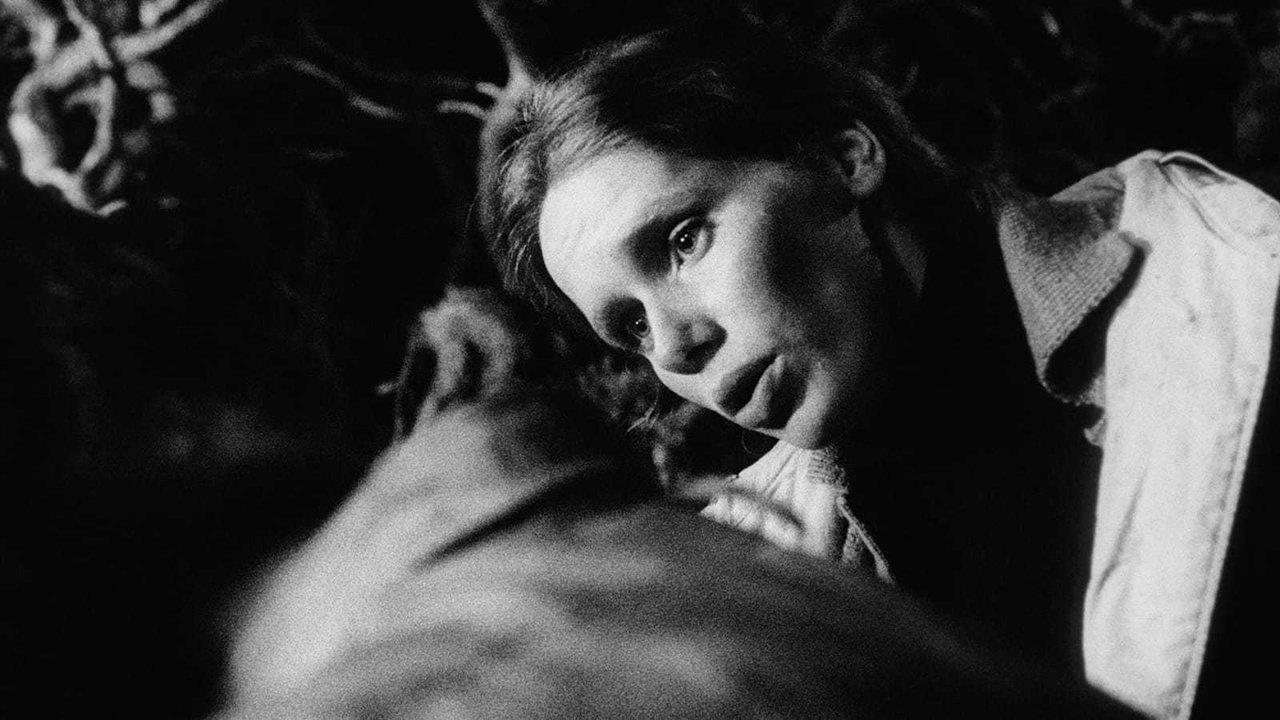
The work of Ingmar Bergman has not won me over. I have watched Persona, Scenes from a Marriage (TV Version), Fanny and Alexander (Film version) and now this movie making four in all. For those reasons, Fanny and Alexander is my favorite out of the four because it’s an adult’s take on a Christmas movie. Somehow though, I find that Bergman’s works come from an emotional place that I cannot relate culturally with. This makes sense; Sweden is different from America. Besides, Ingmar Bergman himself doesn’t resemble me much especially in relation to how he treated his wives and always fucked actresses who worked with him. I hate Bergman but still watch his movies to understand what he has expressed through them.
Through found writings which are dramatized, we follow Johan Borg (Max von Sydow) a painter on Baltrum, the Frisian island where he lives with his pregnant wife Alma (Liv Ullman). Johan has started having intense hallucinations about strange creatures and they have caused him to develop insomnia. This worry’s Alma. One day when Johan is away, an odd old woman comes by and tells her to read her husband’s diary. She does so and finds out that he is possessed with a lover from before in addition to having received invitation to go over to Baron Von Merkens nearby castle. At the castle dinner party, Alma accompanies her husband where she sees Joan’s lover in a portrait hanging on the wall. Soon after that, Johan has an especially bad night of sleep and confesses some dark secrets to his wife such as how he fought off a wild boy while fishing and later killed him. He talks about “The Hour of the Wolf,” the time during the night when most births and deaths occur. All this disturbs Alma who thinks her husband is losing touch with reality.
Bergman framed Hour of the Wolf by his own nightmares. They were recurring ones in which a woman removes her face and an entity walks across the ceiling. However, we learn that Johan shares a story of being punished by his parents by being locked up in a wardrobe where he was told there lived a dwarf. It turned out it was according to Bergman’s own childhood. Also, stories of ETA Hoffmann, who is a gothic horror writer that wrote The Nutcracker and The Mouse King as well as inspired Powell & Pressburger’s fantastic film motivated him too. This means that the Hour of the Wolf went into pre-production while Persona was still on Bergman’s hands indicating this dark period for the filmmaker.
Johan is widely acknowledged as standing for Ingmar Bergman. Ullmann had become pregnant with his child, so what she overtly displays during the shooting actually happened in her life at that time. At that moment, Bergman himself went through an Ego collapse which generated serious questions about his identity. Johan also goes through such process and shows us his perverted inner world with thoughts about masochism and necrophilia. Today transvestism can be easily commented upon due to its outdatedness and cultural views as if cross-dressing were some kind of moral sin.
The most captivating thing about the castle is its inhabitants, and this might have something to do with vampires. Towards the end of the movie Johan starts taking some animalistic looks that reminded me of a werewolf image in popular culture. Moreover, there are references to cannibalism such as a fear of being consumed and “Little Red Riding Hood.” Such horror and fantasy tropes are often coupled with anxieties about sexual awakening. These illusions are usually symbolic representations of inner horrors which bring back memories of the tale about the little guy who lived in the closet and Johan’s encounter with a wild child who attacked him.
It is arguable that Johan’s conflict with his “Evil Genius” was purely psychosomatic and he never took a life. In this regard, Robert Eggers’ The Lighthouse shares many similarities because what the viewer sees is not happening to the character literally. This alludes that all of us tend to feel related with themes of getting away from society and ideas emerging into our heads. There have been times when I have felt uncomfortable with my own thoughts but met some who can’t stand quietness or being alone. They often seek stimuli from the external world and voices around them, otherwise they may have to face themselves head-on and work through these feelings. It’s during this time that the Ego confronts them in a personification called The Hour Of The Wolf.
This film goes further than Bergman to present what exists inside an artist. It is impossible to produce art that can be emotionally affecting unless it affects your mind greatly. It is thus logical for an artist to eventually delves inside themselves to know where the certain images are coming from. What exactly is a muse? Is it good or bad? Therefore, the horror that arises is social in nature, i.e., fear of being socially judged. The things that keep Johan awake at night are the same things that inspire him during the day. The terror of the artist always trying to relate to his society which will never really know what he’s saying, can only come close.
To make great art is not just showing skill but opening yourself up completely and dangerously; your readers may eventually see something they would never forget as long as they live. When you share your work with others you’re putting yourself at risk too. YouTube For people who like gory horror stories with a lot of action, Hour of the Wolf might not be to their liking at all.
The movie is innovative so, like Skinamarink or Come True, I could go for something scary and dreamlike at the same time.
For more movies like Hour of the Wolf (1968) visit solarmovie.







